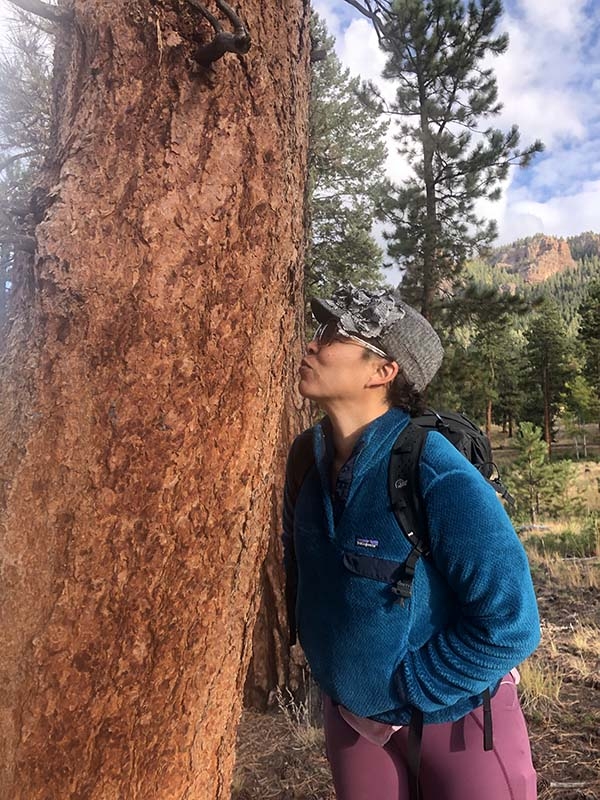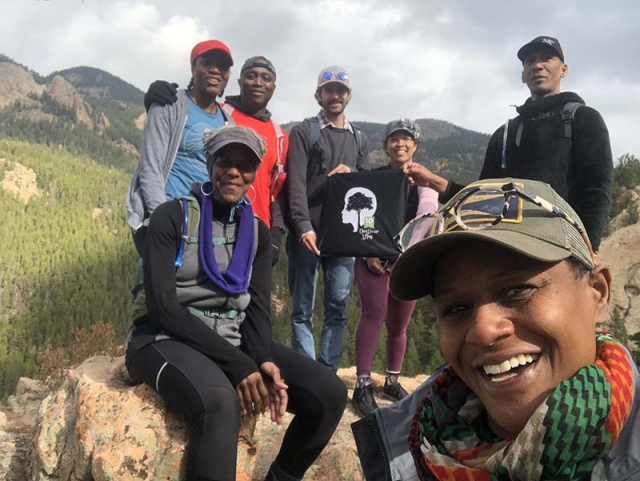Reading Forest History
In the photo, Ling sniffs a ponderosa pine. The vanilla-like smell of this tree’s bark is not its only virtue. Ponderosas are also great storytellers. For our most recent EcoFlora hike with Outdoor Afro, we paid close attention to tree characteristics to read the history of people, plants and fire in Staunton State Park.

Let’s start with fire. Large pines record fires they’ve lived through with charred bases and scars. If you look for the burnt trunks, you will see them all the time. Absence of trees can also tell us a fire story. Where you see meadows, aspens or small needle-leaf trees growing, there was often a fire that cleared the way. Scrutinize the soil and you may see charred bark.
We can also read when forests have not experienced fire recently. Dense stands with smaller, bunched trees are typical when there hasn’t been a burn. The thick canopy blocks light, stunting understory growth.
Now a human story. While on the hike we celebrated forest history in the making. Randy Moore recently became the chief of the United States Forest Service, and the first Black American chief since the organization’s founding in 1905.

In his inaugural address, Moore emphasized the need to promote healthier and more fire-tolerant forests by methods such as cutting, mulching, grazing and burning, which thins forest landscapes.
The current policy of heavy treatment is different from the Forest Service’s stance 100 years ago. The Forest Service used to put out as many fires as they could, as fast as they could. And trees from this era show how successful they were. Many forests are dark and dense because the Forest Service blocked and excluded fire. Paradoxically, reducing fire created forests susceptible to intense blazes. Along with warmer, drier temperatures, this has led to the large fires we see in the West today.
Moore still promotes extinguishing wildfires quickly so that they don’t become dangerous, but also emphasizes actively burning landscapes when conditions are safer. Burning can also create healthy renewal for many species. We burn some of our gardens for similar reasons.
History echoes in our everyday. Seeking out diverse voices to tell us our collective pasts can help lead us to more inclusive futures – for people and plants alike.

Add new comment